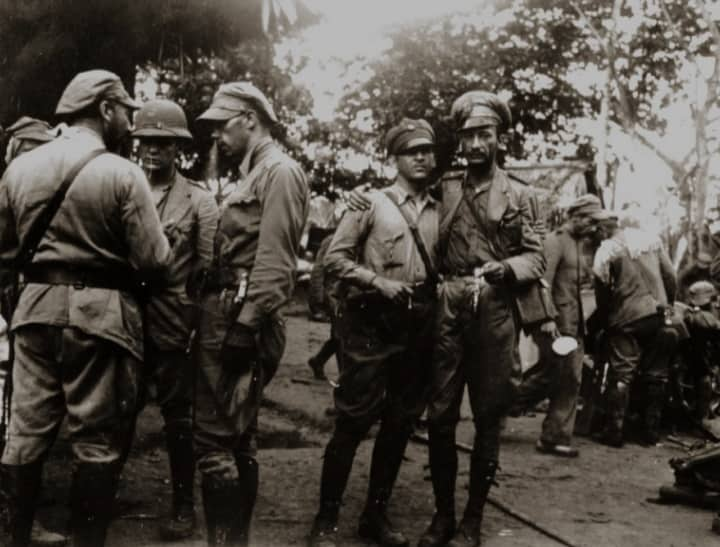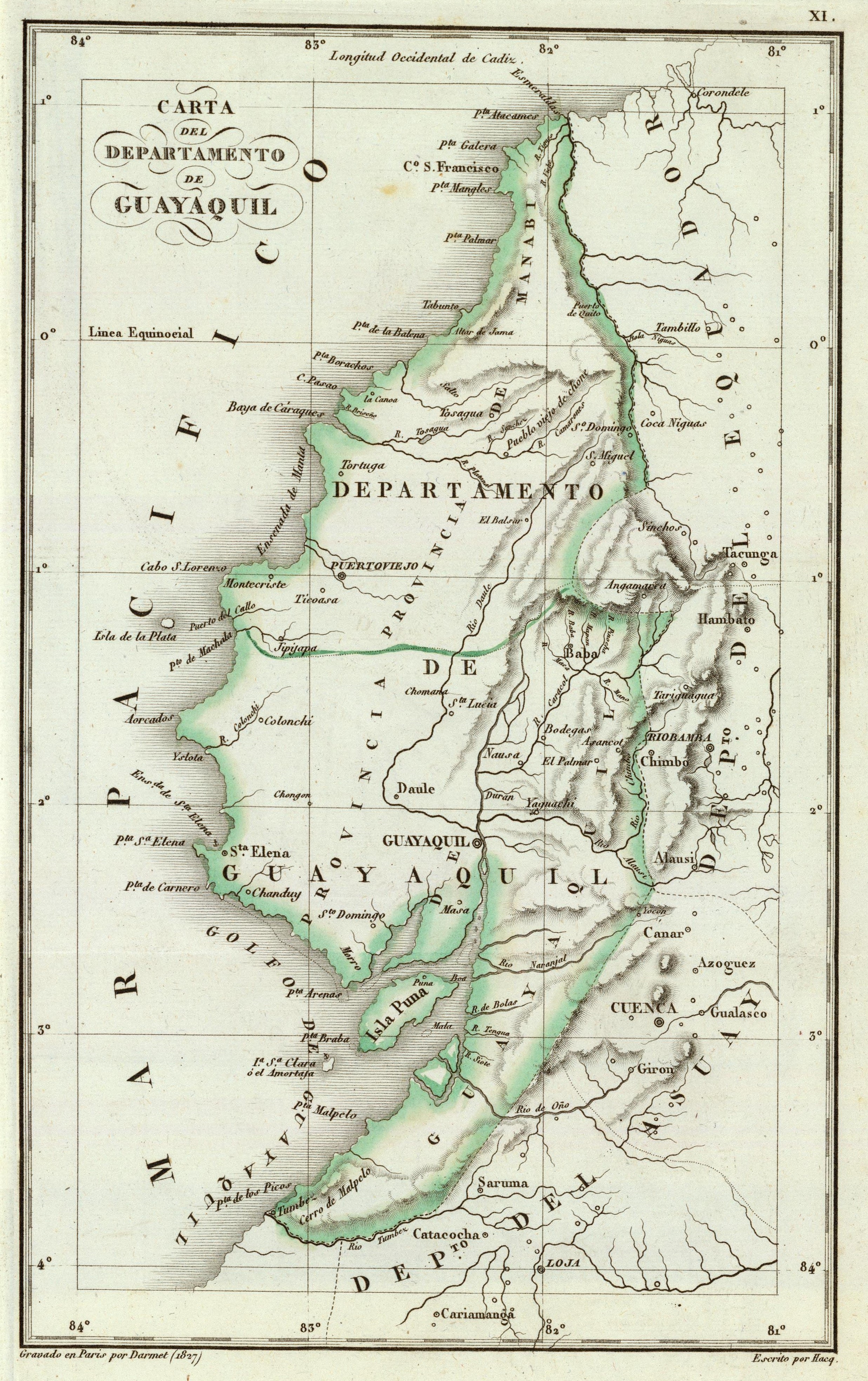|
General Command Of Maynas
The General Command of Maynas was a governorate and general command of the Spanish Empire that existed from 1802 to 1822. It replaced the governorates of Quijos and Maynas, excluding the latter's village of Papallacta. History The territory was created through the ''real cédula'' of July 15, 1802, which transferred the governorates of Maynas and Quijos (excluding the village of Papallacta) into the Viceroyalty of Peru. It was incorporated into the Protectorate of Peru as a department with the name of ''Quijos and Maynas'' following a war for the territory's independence that lasted from 1821 to 1822, during the Spanish American wars of independence. The aforementioned department was ultimately incorporated into the Department of Trujillo in 1825. After the wars of independence in Ecuador and Peru, the zone became extremely relevant for both countries, as it was a main focus of the Ecuadorian–Peruvian territorial dispute, which escalated in 1941 as the Ecuadorian–Peruv ... [...More Info...] [...Related Items...] OR: [Wikipedia] [Google] [Baidu] |
Governorate
A governorate or governate is an administrative division headed by a governor. As English-speaking nations tend to call regions administered by governors either states or provinces, the term ''governorate'' is typically used to calque divisions of non-English-speaking administrations. The most common usage are as a translation of Persian "Farmandari" or the Arabic '' Muhafazah''. It may also refer to the '' guberniya'' and '' general-gubernatorstvo'' of Imperial Russia or the '' gobiernos'' of Imperial Spain. Arab countries The term ''governorate'' is widely used in Arab countries to describe an administrative unit. Some governorates combine more than one '' Muhafazah''; others closely follow traditional boundaries inherited from the Ottoman Empire's ''vilayet'' system. With the exception of Tunisia, all translations into the term governorate originate in the Arabic word ''muhafazah'' (). * Governorates of Bahrain *Governorates of Egypt *Governorates of Iraq (official trans ... [...More Info...] [...Related Items...] OR: [Wikipedia] [Google] [Baidu] |
Spanish American Wars Of Independence
The Spanish American wars of independence () took place across the Spanish Empire during the early 19th century. The struggles in both hemispheres began shortly after the outbreak of the Peninsular War, forming part of the broader context of the Napoleonic Wars. The conflict unfolded between the royalists, those who favoured a unitary monarchy, and the patriots, those who promoted either autonomous constitutional monarchies or republics, separated from Spain and from each other. These struggles ultimately led to the independence and secession of continental Spanish America from metropolitan rule, which, beyond this conflict, resulted in a process of Balkanization in Hispanic America. Thus, the strict period of military campaigns ranges from the Battle of Chacaltaya (1809) in present-day Bolivia, to the Battle of Tampico (1829) in Mexico. These conflicts were fought both as irregular warfare and conventional warfare. Some historians claim that the wars began as localized civil war ... [...More Info...] [...Related Items...] OR: [Wikipedia] [Google] [Baidu] |
Department Of Loreto
Loreto () is Peru's northernmost department and region. Covering almost one-third of Peru's territory, Loreto is by far the nation's largest department, slightly smaller than Japan; it is also one of the most sparsely populated regions due to its remote location in the Amazon Rainforest. Its capital is Iquitos. Geography * Northwest: Ecuador: Sucumbíos Province, Orellana Province, Pastaza Province and Morona-Santiago Province * North: Colombia: Putumayo Department * Northeast: Colombia: Amazonas Department * East: Brazil: Amazonas State and Acre State * South: Ucayali and Huánuco regions * West: San Martín and Amazonas regions Loreto's large territory comprises parts of the high and low jungle, and is largely covered with thick vegetation. This territory has wide river flood plains, which are covered with rainwater and are usually swamped in summer. In these flood areas there are elevated sectors called ''restingas'', which always remain above water, even in times ... [...More Info...] [...Related Items...] OR: [Wikipedia] [Google] [Baidu] |
Rio Protocol (1934)
The Protocol of Peace, Friendship and Cooperation and Additional Act Between the Republic of Colombia and the Republic of Peru, also known simply as the Rio Protocol, was an international agreement signed in Rio de Janeiro between Colombia and Peru on May 24, 1934. The Protocol was intended to finally resolve the long-running Colombian–Peruvian territorial dispute, territorial dispute between the two countries, and brought about the official end of the Colombia–Peru War. Background The dispute between Colombia and Peru over the sovereignty of the Amazon basin dates back to the aftermath of the Spanish American wars of independence, wars of independence. Gran Colombia fought Gran Colombia–Peru War, a war with Peru over a border dispute in the area of Tumbes, Jaén and Maynas. The Treaty of Guayaquil put an end to the military campaign but problems arose due to the subsequent dissolution of Gran Colombia, among them the continuity of the border issue. Direct and continuous ... [...More Info...] [...Related Items...] OR: [Wikipedia] [Google] [Baidu] |
Colombia–Peru War
The Colombia–Peru War, also called the Leticia War, was a short-lived armed conflict between Colombia and Peru over territory in the Amazon rainforest that lasted from September 1, 1932, to May 24, 1933. In the end, an agreement was reached to divide the disputed area between both countries. The conflict was rooted in the Boundary Treaty of March 24, 1922, which transferred the Leticia district to Colombia, giving Colombia access to the Amazon river. The district was mostly inhabited by Peruvians, which fueled grievances among Peruvians and led them to seek to modify the treaty. Background Civilian takeover The Colombia–Peru War was the result of dissatisfaction with the Salomón–Lozano Treaty and the imposition of heavy tariffs on sugar. The National Patriotic Junta (), known also as the Patriotic Junta of Loreto (), was created on August 27, 1932, by Peruvian civilians Oscar Ordoñez and Juan La Rosa Guevara, in the presence of Lieutenant Colonel Isauro Calderón, Lieu ... [...More Info...] [...Related Items...] OR: [Wikipedia] [Google] [Baidu] |
Colombian–Peruvian Territorial Dispute
The Colombian–Peruvian territorial dispute was a territorial dispute between Colombia and Peru, which, until 1916, also included Ecuador.Ecuador and Colombia signed the Muñoz Vernaza-Suárez Treaty in 1916, ending their dispute. The dispute had its origins on each country's interpretation of what ''Real Cédula, Real Cedulas'' Spain used to precisely define its possessions in the Americas. After Spanish American wars of independence, independence, all of Spain's former territories signed and agreed to proclaim their limits in the basis of the principle of ''uti possidetis juris'', which regarded the Spanish borders of 1810 as the borders of the new republics. However, conflicting claims and disagreements between the newly formed countries eventually escalated to the point of armed conflicts on several occasions. The dispute between both states ended in the aftermath of the Colombia–Peru War, which led to the signing of the Rio Protocol (1934), Rio Protocol two years later, fin ... [...More Info...] [...Related Items...] OR: [Wikipedia] [Google] [Baidu] |

